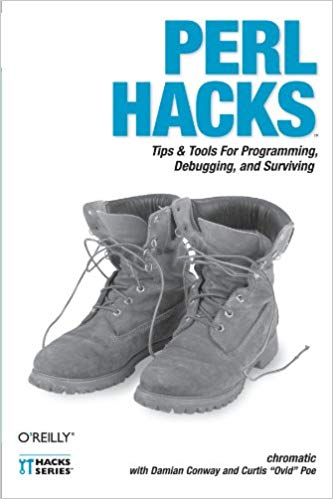My discussion of Alan Kay's ideas behind OO programming made the rounds, getting about 13,000 page views (as of this writing) from various sources, including Hacker News and Reddit . There was quite a bit of discussion, most of which I'll cheerfully let people decide for themselves, but there's one perennial question, as exemplified by this response , which I really need to address.
So, what exactly should happen when you request last_name on an object that doesn't respond to that message? ... It tells me you haven't been the one receiving those 4AM phone calls, angry dictates from C-levels, and responsible for hundreds of thousands of dollars (or even millions) of lost revenue per minute of down-time.
There was a lot of vitriol in the comment and I didn't want to respond to that, but in this case, that vitriol actually strikes to the heart of this issue. Specifically, I have been on pager duty for several companies, getting those frantic early morning phone calls and that's helped to guide my thoughts on what robust computing should be, and how you might handle objects that don't respond to messages.

Back in the 90s, when I was a COBOL programmer for a huge insurance company, I was responsible for writing software that would integrate third-party data into our accounting system. Whenever I would write new software, I would send that to our "operators", along with a series of steps on how to restart the software if any step in our JCL failed. I really didn't want to get a late-night call, so I tried very hard to ensure those instructions were clear, and even took the naughty step of allocating more disk space than my software needed to guarantee that this would never be a problem with my software. I knew the main accounting software ran out of disk space every couple of weeks, requiring costly work on the part of the developers and operators to coordinate on resurrecting a batch job.
Obviously, that was much earlier in my programming career. I didn't know anything about OOP, had never heard of Alan Kay, and couldn't possibly understand the core issues he was discussing, but I had done one thing right: I wrote down very, very complete documentation that intelligent people could use to restart my software if it failed. Keep that in mind: I gave a lot of thought about how to respond if my software didn't perform as expected.
Fast forward a couple of decades to when I was hired to fix the ETL system of a company working to reduce the costs of Phase III clinical trials. . It was a large project, with many parts, but the ETL system had been written a couple of years earlier by a doctor! I was rather surprised. It was clear that he wasn't an experienced developer, but his work showed a lot of brilliance because he deeply understood the problem space.
The ETL system was a bottleneck for this startup and honestly, no one wanted to touch it. A new dataset would arrive from a pharmaceutical company and it would take two days of manual effort from a programmer to get the dataset into a shape where it could be run through the "ETL" system. I say "ETL" in scare quotes because obviously you don't want to take a highly-paid software developer off of their work for several days of manual data cleanup just so you can process an Excel document. But this work was critical to the startup and while they dreaded getting new data, they had to handle it. So they offered me a contract and the other developers wished me luck, happy to be washing their hands of the mess.
After a few months, I had rewritten the ETL system to be a fault-tolerant, rules-driven system that could handle the radically different data formats that pharmaceutical companies kept sending us. More importatnly, instead of two days of hands-on work from one of our developers, it turned into two hours of automated work, leaving the developers free to do other tasks. So given that the data quality was rubbish, how did I get there?
I had to jump through a lot of strange hoops, but here's an interesting key: the pharmaceutical companies were astonished that we could get a year's worth of work done in a month. They simply were not able to change their processes and asking them to "fix" the data they sent us failed. So my job was to fix it for them. And that brings me back to the main issue with Alan Kay's idea about messaging. What do you do if you send a message and don't get a response? Here's how we programmers tend to think of that:
try {
// This rubbish method names helps to illustrate that we
// might have an unreliable source
result = someObject.fetchDataFromServer(orderId);
}
catch(UnknownOrder uo) {
System.out.println("Unknown order id: " + uo);
}
catch(ExistentialCrisis ex) {
System.out.println("Server is sitting in the corner, crying.");
}
catch(Exception e) {
System.out.println("Yeah, this blew chunks.");
e.printStackTrace(new java.io.PrintStream(outputStream));
}This is the software equivalent of "Not My Problem." After all, the
fetchDataFromServer() method should return data! It's not
my fault if the other team's server sucks!
But I had no way of telling a bunch of multi-billion dollar pharmaceutical
companies to get their act together. Making the ETL system work very much
was my problem. And by taking responsibility for that problem, I
wrote a much more robust system. So what do you when
fetchDataFromServer() fails? You do the same thing I did at the
insurance company when I sent instructions to the operators explaining how to
"fix" things when the software failed. Except that I'm sending that to my
software, telling it how to fix itself. This requires teaching developers a
different way of thinking about software, something that goes beyond
try/catch, "not my problem."
So when fetchDataFromServer() fails, or when an object doesn't
respond to the message you sent, what do you? There's a simple way to approach
this: ask yourself what you would do in real life. What if you deleted your
partner's phone number by accident and you need to call him. Do you just give
up and say "not my problem?" Of course not. If he's ever sent you a text, you
probably have his number on the text. Maybe he sent you an email containing
his number. Maybe your friend has his number and you can ask them. Or maybe
you can find a different way of contacting your partner. The choice is yours:
give up, or take responsibility for finding a solution.
Hell, maybe we should call this RDD, "responsibility-driven development," because what the programming world needs is new acronyms.
For the ETL system, I would have problems such as needing to know if "Dr. Bob Smith at Mercy Clinic" was the same person as "Robert Smith (no title) at Mercy Hospital." Sometimes those different records would come in from different pharmaceutical companies, but sometimes they would come in from the same pharmaceutical company; I'd still have to figure out if they were the same person. This is the very definition of "bad data" but it was critical that the ETL system work and, as it turns out, it's a fairly well-understood problem and there are many approaches.
In this case, I would use various geolocation services to find addresses and lat/long data for the locations (with fallbacks if a service was down). I would create known "name variants" (in English, "Robert" is often shortened to "Bob"), encode names with something like Soundex , stripped stop words from names, check email addresses and phone numbers, along with their Levenshtein distance since they were a frequent source of typos, and so on. By the time I was done, I had a large list of things which were potentially identifying, and scoring to indicate which sources of "truth" were more valuable.
By calculating a score, if it exceeded a particular threshold, we assumed they were the same person. Below a threshold, we assumed they were different people. Between those thresholds, we flagged them for follow-up. And if the external geolocation services were down? Fine! I just didn't get a score for their data, but I still had plenty of other scores to help me calculate that threshold. Surprisingly, we usually had no follow-up records, despite often processing tens of thousands of people per batch.
This is how you deal with unanswered messages. You think about your response instead of just letting your software crash. Is it OK if you don't have that info? Can you just leave a spreadsheet field blank? Are there other sources for that information? Can you try later to fetch that information, having designed a nice async system to make this easier? There are tons of ways of dealing with these issues, but they all involve more work, and different problems, of course, involve different solutions.
This isn't to say that there's always a neat answer, but curiously, as I find problem spaces increasing in complexity, I sometimes find that there are more solutions to bad data instead of just "more bad data."
There is, however, a little bug in this ointment: clients often want
software today, not tomorrow. As we're pushed harder to develop more software
in less time, struggling under the tyranny of budgets, we often don't have the time to make our software this robust. Even if it
would save the client a lot of money in the long run, they want to move
quickly and let their later selves pay down the technical debt. So I'll be
writing a more try/catch blocks in the future, because sometimes
it's really not my problem.


